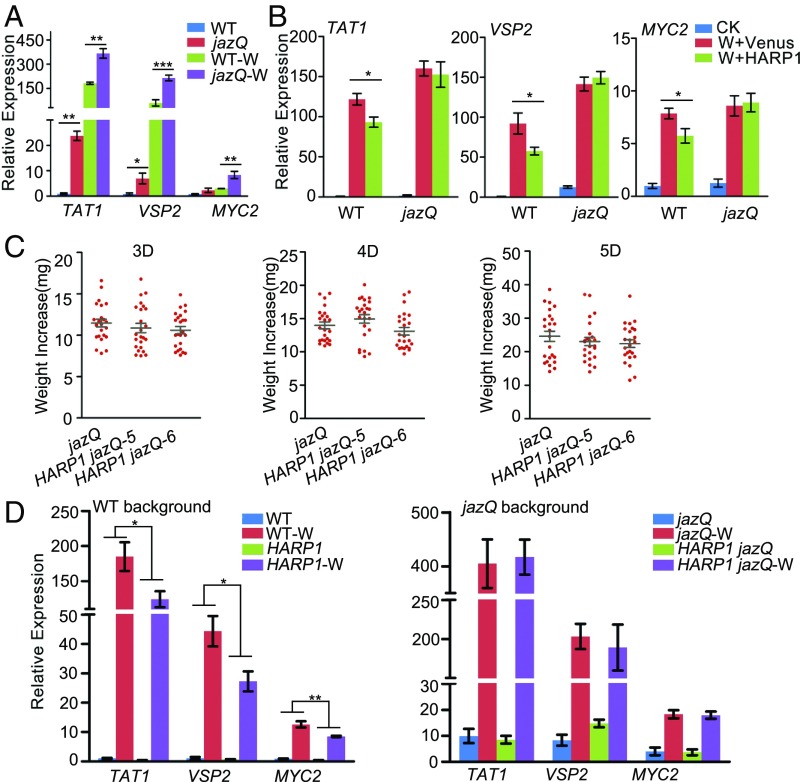Fig. 4.
Wounding responses and insect resistance were not obviously affected by HARP1 in the jaz quintuple mutant jazQ. (A) Wounding responses were higher in jazQ. The wild-type (WT) and jazQ leaves were treated with mechanical wounding; gene expressions in leaves of the unwounded and the wounded (W) plants were detected by qRT-PCR 4 h after treatment. The gene expressions in unwounded WT were set to 1. Data were analyzed by Student’s t test. *P < 0.05, **P < 0.01, ***P < 0.001. Error bars represent ± SD (n = 3 biological replicates). (B) The gene inductions were not affected by HARP1 in the jazQ mutant upon wounding. The prokaryotically expressed HARP1 (W+HARP1) and Venus (W+Venus) was painted on the wounding sites of WT and jazQ plant leaves. The unwounded plants were used as control (CK). Gene expressions were detected by qRT-PCR 4 h after treatment. The gene expressions in unwounded WT were set to 1. Data were analyzed by Student’s t test. *P < 0.05. Error bars represent ± SD (n = 5 biological replicates). (C) H. armigera larvae gained similar weight increase when fed on 35S:6MYC-HARP1 jazQ (HARP1 jazQ) and jazQ leaves. The third-instar larvae were fed with plant leaves for indicated days, and the weight increases were measured (n = 24). (D) 35S:6MYC-HARP1 jazQ and jazQ plants exhibited similar gene inductions upon wounding. The HARP1 expressing plants under WT and jazQ background were treated with wounding (W) and samples of WT, 35S:6MYC-HARP1 (HARP1), jazQ, and 35S:6MYC-HARP1 jazQ (HARP1 jazQ) were collected 4 h after treatment. Gene expressions were detected by qRT-PCR. The expression in the unwounded WT was set to 1. Data were analyzed by two-way ANOVA followed by multiple comparisons (Tukey test). (*P < 0.05, **P < 0.01). Error bars represent ± SD (n = 5 biological replicates). All of the experiments were repeated at least two times, and the results were consistent.

